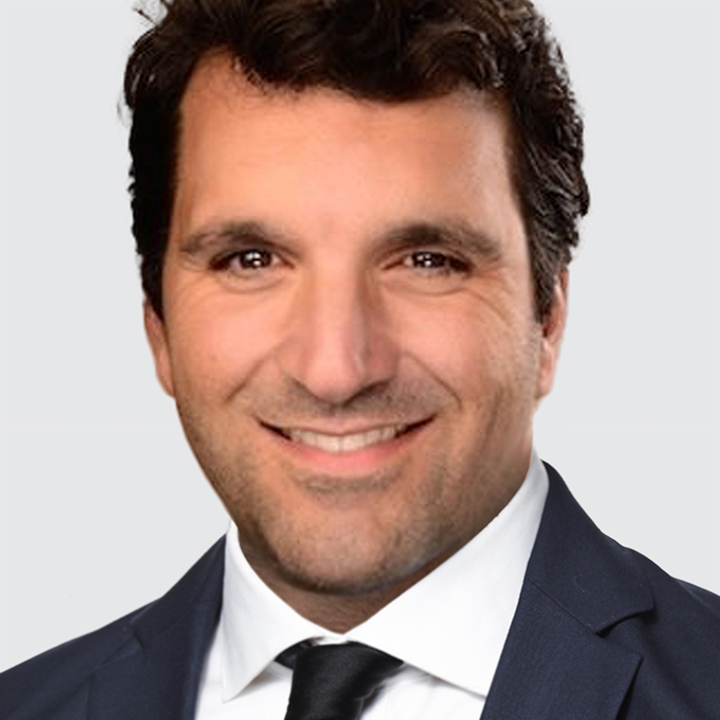- Fed, BOC, and BOJ to hold fire. But Fed faces political heat to lower rates. USD vulnerable to more downside.
- Outcome of US-EU trade negotiations ahead of Friday’s deadline will guide EUR.
- Australia’s Q2 CPI will test the RBA’s cautious easing guidance.
Please note: Charts are only accessible via our email distribution list. Send me your email to get full acess.
No Cut For You!
USD started last week on the defensive as trade deal optimism turbocharged risk assets. The US struck a trade pact with Japan and the Philippines. Also, US Treasury Secretary Scott Bessent confirmed he will meet his Chinese counterparts in Stockholm on Monday and Tuesday for their third round of talks aimed at extending a tariff truce which is set to expire on August 12.
USD regained some ground later in the week supported by encouraging US economic activity. The composite PMI indicated that private sector growth momentum quickened sharply in July and initial jobless claims unexpectedly declined to a 14-week low, underscoring resilient labor market conditions. There’s plenty of policy relevant US economic data this week: June JOLTS, July consumer confidence, July ADP employment, Q2 GDP, June PCE, July NFP, and July ISM manufacturing.
The FOMC rate decision takes the spotlight on Wednesday. The FOMC is widely expected to keep the target range for the Fed funds rate at 4.25-4.50%. Markets also anticipate two governors to dissent in favor of a 25bps cut, Christopher Waller and Michelle Bowman.
Regardless, Fed Chair Jay Powell will likely stress again that the Fed is well positioned to wait for greater clarity before considering any adjustments to the policy stance. Indeed, progress towards the Fed’s 2% inflation goal is stalling, the economy is resilient, and the labor market is close to full employment. Fed funds futures imply virtually no chance of a July 25bps cut, rising to 67% in September and fully priced in for October.
The Fed’s wait-and-see guidance would normally be USD-friendly, but political heat to lower the funds rate can further weigh on USD. President Donald Trump’s remark that firing Fed Chair Jay Powell isn’t necessary offers limited reassurance. Remember, markets may soon have to contend with a “shadow” Fed chair, if President Trump signals his pick months ahead of Powell’s May 2026 term end. All three leading candidates (Kevin Warsh, Kevin Hassett, Christopher Waller) to succeed Powell have argued for lower interest rates right now. Conflicting signals between the official Chair and a perceived “shadow” figure will increase market confusion, lead to mixed policy expectations, and erode the Fed’s image as a non-partisan institution.
Bank of Canada to Keep Rates on Ice
The Bank of Canada (BOC) is widely seen to leave the policy rate at 2.75% for a third consecutive time on Wednesday. Canada underlying inflation is sticky above the Bank’s 2% target and the June labor force survey was very strong. Moreover, the BOC’s Q2 Business Outlook Survey showed that firms now see the worst-case effects on costs and sales from tariffs and related uncertainty as less likely to occur than in Q1. In fact, the outlook for export sales improved, a majority of firms plan to keep employment steady and inflation expectations remain within the Bank’s target range.
The BOC will likely keep the door open for more easing due to the risk of steeper tariff rates. If so, CAD faces some downside risk as the swaps curve reprices odds of a 25bps cut in the next 12 months (currently 60% priced-in). Absent a trade agreement, the US plans to impose a tariff of 35% (up from 25% currently) on Canadian goods not covered by the United States-Mexico-Canada Agreement (USMCA) starting August 1. The BOC’s updated July Monetary Policy Report (MPR) will offer a fresh update on how US trade policy could play out for the Canadian economy.
BOJ Still in Zen Mode
The Bank of Japan (BOJ) is widely expected to leave the policy rate at 0.50% on Thursday. BOJ Governor Ueda is also expected to reiterate the guidance of raising rates if the outlook for economic activity and prices will be realized.
The BOJ’s updated Outlook Report risk fueling odds of a September rate hike (currently 25% priced-in) and lead to a kneejerk JPY upside move. The BOJ’s inflation projections are poised to get revised higher. Both core CPI less fresh food and core CPI less fresh food & energy are tracking well above the BOJ’s fiscal 2025 average forecast of 2.2% and 2.3%, respectively.
In our view, the BOJ will not raise the policy rate by more than is currently priced-in (50bps in the next two years) partly because CPI less food & energy has held below 2% for over a year. Bottom line: the BOJ’s cautious normalization cycle limits JPY upside. We see USD/JPY holding a wide 142.00-150.00 range the next few months.
Eurozone’s Economic Double Feature Upstaged by August 1 Deadline
Eurozone real GDP (Wednesday) is forecast to stall over Q2, a payback from Q1’s tariff-front loading 0.6% q/q boost. Beyond Q2, leading indicators suggest private sector economic activity is picking up pace. Meanwhile, Eurozone headline CPI (Friday) is projected to dip back to 1.9% y/y in July vs. 2.0% in June, and 1.9% in May. Core CPI is expected to remain at 2.3% y/y for a third consecutive month in July.
The ECB signaled last week that it’s pretty much done easing. President Christine Lagarde stressed that the ECB is in a good place with inflation at 2%, adding “you could argue that we are on hold.” The swaps market implies about 70% odds of a 25bps cut in the next 12 months. Bottom line: the ECB’s pause, coupled with political pressure on the Fed to ease, will continue to underpin the EUR/USD uptrend.
However, in the short-term EUR will be guided by the outcome of US-EU trade negotiations ahead of Friday’s deadline. President Donald Trump said last week “I would say that we have a 50-50 chance, maybe less than that, but a 50-50 chance of making a deal with the EU.” European Commission President Ursula von der Leyen will meet President Trump today (Sunday) raising hopes the EU and US are closing in on a trade agreement.
The EU faces 30% tariffs on goods exports to the US (up from 10% now) if no deal is reached by Friday. EUR/USD risk falling to 1.1500 if talks collapse, but a breakthrough trade deal would likely see EUR/USD test its July 1 high near 1.1830.
CPI Watch Down Under
Australia’s Q2 CPI print (Tuesday) will test the RBA’s guidance for “a measured and gradual approach” to monetary policy easing. Headline CPI is expected at 2.2% y/y vs. 2.4% in Q1 and the policy-relevant trimmed mean CPI is expected at 2.7% y/y vs. 2.9% in Q1. The RBA forecasts trimmed inflation of 2.6% y/y in Q2, but RBA Governor Michele Bullock cautioned last week that “the monthly CPI Indicator data, which are volatile, suggest that the fall [in trimmed mean inflation over Q2] may not be quite as much as we forecast back in May.”
A downside surprise in trimmed mean inflation will strengthen the case for further RBA cuts and undermine AUD. RBA cash rate futures virtually fully price-in a 25bps cut at the next August 12 meeting and 75bps of total easing in the next 12 months.
Elsewhere in Central Banking
Chile central bank is widely expected to resume easing and reduce rates 25bps to 4.75% on Tuesday. At the last meeting June 17, the central bank left the policy rate at 5.00% but opened the door for more easing noting that if its baseline scenario materializes, the policy rate “will be approaching its range of neutral values [estimated to between 3.50-4.50%]” in the coming quarters. With headline CPI inflation tracking slightly below the central bank’s average 2025 projection of 4.3%, a rate cut seems appropriate. The swaps market price-in 75bps of total cuts in the next 12 months and the policy rate to bottom at 4.25%.
The Monetary Authority of Singapore’s (MAS) monetary policy statement is due Tuesday. The June MAS Survey of Professional Forecasters showed that 57.9% of respondents anticipate further monetary policy easing in July, largely via a flattening of the slope of the Singapore dollar nominal effective exchange rate (S$NEER) policy band.
The MAS already reduced the slope of the S$NEER policy band twice this year while keeping the width of the policy band or the level at which it is centered unchanged. Singapore’s benign inflation backdrop (core inflation is sticky near the lower-end of the MAS average 2025 forecast range of 0.5–1.5%) and fragile economic recovery argue for additional easing.
Brazil central bank is widely expected to keep rates at 15.00% Wednesday. At the last meeting June 18, the central bank raised rates 25bps to 15.00% but signaled that the tightening cycle has likely ended. The bank said “If the expected scenario materializes, the Committee foresees an interruption of the rate hiking cycle to examine its yet-to-be-seen cumulative impacts.”
Headline CPI inflation in Brazil has been sticky above 5% y/y since March, exceeding the bank’s 1.5-4.5% tolerance band. Nonetheless, the US threat to impose 50% tariffs (up from 10%) on Brazilian goods from August 1 will keep the bank on the sidelines for now. The swaps market is pricing in steady rates over the next six months followed by 100bps of easing over the subsequent six months.
Colombia’s central bank is expected to resume easing and slash rates 25bps to 9.00% on Thursday. At the last meeting June 27, the central bank kept rates steady at 9.25% and warned that “The projected increase in the fiscal deficit for 2025 and beyond poses a challenge to the sustainability of public finances and reduces the room for monetary policy easing.” However, the vote split at that meeting suggests the bar for a rate cut this week is low. Four Directors voted in favor of keep rates steady, two for a 50bps reduction, and one for a 25bps reduction. The swaps market is pricing in about 75bps of total easing over the next 12 months that would see the policy bottom near 8.50%.
South African Reserve Bank (SARB) is expected to deliver a follow-up 25bps cut to 7.00% Thursday. Headline CPI rose less than expected in June to 3.0% y/y (consensus: 3.1%) vs. 2.8% in May. Inflation has been near or below the floor of the central bank’s 3-6% target range since October 2024. Meanwhile, core CPI unexpectedly dropped 0.1pts in June to 2.9% y/y (consensus: 3.0%), the lowest level since April 2021.
Of note, a review of South Africa’s inflation target by the National Treasury and the central bank is close to completion. If approved, the new inflation target will move down to 3% from the current 3-6% band (4.5% mid-point). Under a 3% objective, the SARB’s model shows the policy rate falling to 7.00% by end-2025 rather than staying at 7.25% in the baseline forecast. The swaps market is more aggressive and price-in nearly 50bps of cuts in the next twelve months and the policy rate to bottom around 6.75%.




